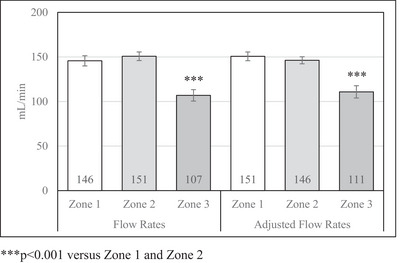02/11/2024
Intraosseux: Passer l'os cortical
The relationship between intraosseous catheter tip placement, flow rates, and infusion pressures in a high bone density cadaveric swine (Sus scrofa) model
Gehrz JA et Al. J Am Coll Emerg Physicians Open. 2024 Jul 4;5(4):e13184.
Background: Intraosseous (IO) infusion is a life-preserving technique when intravenous access is unobtainable. Successful IO infusion requires sufficiently high flow rates to preserve life but at low enough pressures to avoid complications. However, IO catheter tips are often misplaced, and the relative flow rates and pressures between IO catheter tips placed in medullary, trabecular, and cortical bone are not well described, which has important implications for clinical practice.
Objectives: We developed the Zone Theory of IO Catheter Tip Placement based on bone density and proximity to the venous central sinus and then tested the influence of catheter tip placement locations on flow rates and pressures in a cadaveric swine model.
Methods: Three cross-trained participants infused 500 mL of crystalloid fluid into cadaveric swine humerus and sternum (N = 210 trials total) using a push‒pull method with a 60 cm3 syringe. Computed tomography scans were scored by radiologists and categorized as zone 1 (medullary space), zone 2 (trabecular bone), or zone 3 (cortical bone) catheter tip placements. Differences between zones in flow rates, mean pressures, and peak pressures were assessed using analysis of variance and analysis of covariance to account for participant and site differences at the p < 0.05 threshold.
Results: Zone 1 and zone 2 placements were essentially identical in flow rates, mean pressures, and peak pressures (each p > 0.05). Zone 1 and zone 2 placements were significantly higher in flow rates and lower in pressures than zone 3 placements (each p < 0.05 or less).

Flow rates by zone
Conclusion: Within the limitations of an unpressurized cadaveric swine model, the present findings suggest that IO catheter tip placements need not be perfect to acquire high flow rates at low pressures, only accurate enough to avoid the dense cortical bone of zone 3. Future research using in vivo animal and human models is needed to better define the clinical impact of IO catheter placement on infusion flow rates and pressures.
| Tags : i

Les commentaires sont fermés.